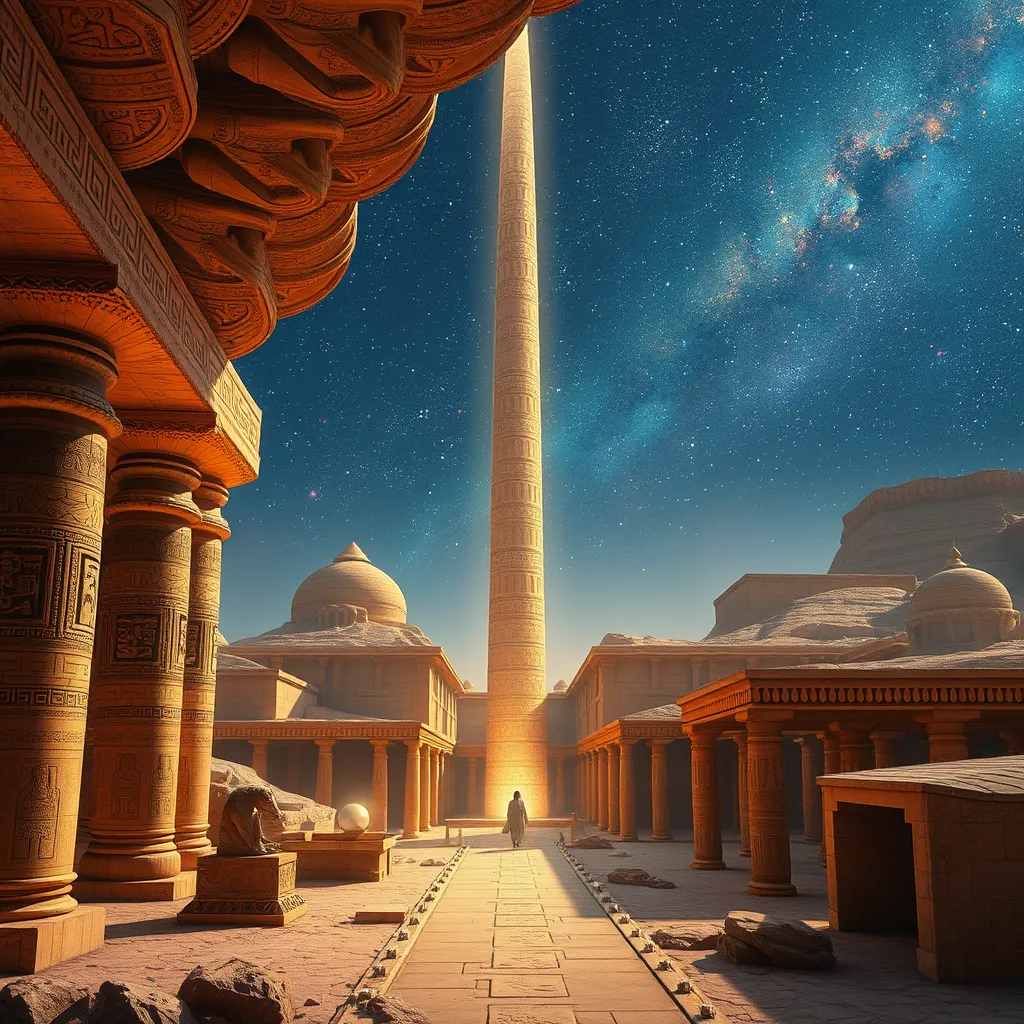The Duat: A Realm of Hidden Wonders
I. Introduction to the Duat
The Duat, often referred to as the Egyptian underworld, holds a significant place in ancient Egyptian mythology. It represents not only a physical space but also a spiritual journey that the deceased must undergo after death. The significance of the Duat can be traced back to its role in the beliefs surrounding the afterlife, where it is seen as a realm filled with both dangers and rewards.
As a mystical realm, the Duat encompasses various domains, each presenting unique challenges and experiences for the souls of the departed. Understanding the Duat provides insight into the ancient Egyptians’ views of life, death, and the beyond.
II. The Structure of the Duat
The Duat is depicted as a complex and multifaceted landscape filled with various regions that reflect both terrestrial and celestial elements. Its structure can be divided into several key areas:
- The River of Night: Often symbolizes the boundary between the living world and the realm of the dead.
- The Fields of Iaru: A paradise-like landscape where the souls of the righteous can enjoy eternal bliss.
- The Hall of Judgment: A critical location where souls are weighed against the feather of Ma’at.
- The Lake of Fire: Represents punishment for the wicked and is a place of torment.
In Egyptian art and literature, the Duat is symbolically represented through elaborate paintings, carvings, and texts that illustrate the journey of the soul. These depictions often highlight the duality of the Duat as both a place of peril and a haven for the virtuous.
III. The Journey Through the Duat
Upon death, the deceased embark on a challenging journey through the Duat. This journey is fraught with obstacles, tests, and encounters with various deities and supernatural beings. The role of the deceased is crucial; they must navigate this realm with knowledge and courage to reach the afterlife successfully.
Key figures play pivotal roles in guiding and assisting the deceased:
- Anubis: The jackal-headed god of mummification and the afterlife, Anubis oversees the embalming process and guides souls through the Duat.
- Osiris: The god of the afterlife and resurrection, Osiris represents the ultimate goal of the journey—the attainment of eternal life.
These deities not only assist the souls but also symbolize the broader themes of death and rebirth that are central to Egyptian beliefs.
IV. Mystical Creatures and Guardians
The Duat is inhabited by a variety of mystical creatures and guardians, each with specific roles in the afterlife journey:
- Serpopards: Mythical creatures with the body of a leopard and the neck of a serpent, representing the unpredictable nature of the Duat.
- Scarab Beetles: Symbolizing transformation and resurrection, scarabs are often associated with the sun god Ra.
- Demons and Serpents: These beings serve as guardians of the Duat, testing the souls and punishing the unworthy.
The presence of these creatures adds layers of complexity to the journey, embodying the challenges that souls must overcome to achieve a favorable judgment.
V. The Weighing of the Heart Ceremony
One of the most critical events in the Duat is the Weighing of the Heart ceremony. This ceremony takes place in the Hall of Judgment, where the heart of the deceased is weighed against the feather of Ma’at, the goddess of truth and justice.
The significance of this ceremony lies in its ability to determine the fate of the soul:
- If the heart is lighter than the feather, the soul is deemed pure and is granted passage to the Fields of Iaru.
- If the heart is heavier, it indicates a life filled with wrongdoing, leading to the soul’s consumption by Ammit, the devourer.
This ceremony encapsulates the moral framework of ancient Egyptian society, emphasizing the importance of living a righteous life in preparation for the afterlife.
VI. The Duat in Ancient Egyptian Texts
Ancient Egyptian texts, most notably the Book of the Dead, provide fascinating insights into the Duat and its significance. The Book of the Dead is a collection of spells, prayers, and incantations intended to assist the deceased in navigating the afterlife.
Key themes and insights from these texts include:
- The importance of knowledge and preparation for the afterlife.
- Descriptions of the various challenges faced in the Duat.
- Guidance on rituals and offerings that aid in the journey.
These texts reflect the ancient Egyptians’ complex beliefs about death and the afterlife, portraying the Duat as a realm of potential and peril.
VII. Modern Interpretations and Cultural Impact
The concept of the Duat has transcended its ancient origins, influencing contemporary literature, art, and media. Modern interpretations often explore themes of life after death, spiritual journeys, and the quest for understanding the unknown.
Some notable influences include:
- Literature: Works by authors like Neil Gaiman and Rick Riordan have incorporated elements of the Duat into their narratives.
- Film and Television: The portrayal of ancient Egyptian mythology in popular media has revived interest in the Duat and its symbolism.
- Spirituality: Modern spiritual movements often draw on the Duat’s themes of transformation and the afterlife.
These interpretations highlight the continuing relevance of the Duat in contemporary discussions of existence and the afterlife.
VIII. Conclusion: The Enduring Legacy of the Duat
The Duat remains a powerful symbol of ancient Egyptian beliefs about death and the afterlife. Its intricate structure, fascinating creatures, and moral significance reflect the complexities of human existence and the universal quest for understanding what lies beyond death.
As we explore the Duat today, we gain insights into the cultural and spiritual dimensions of the ancient Egyptians. The legacy of the Duat continues to inspire and provoke thought, reminding us of the enduring questions surrounding life after death and the mysteries of the unknown.




